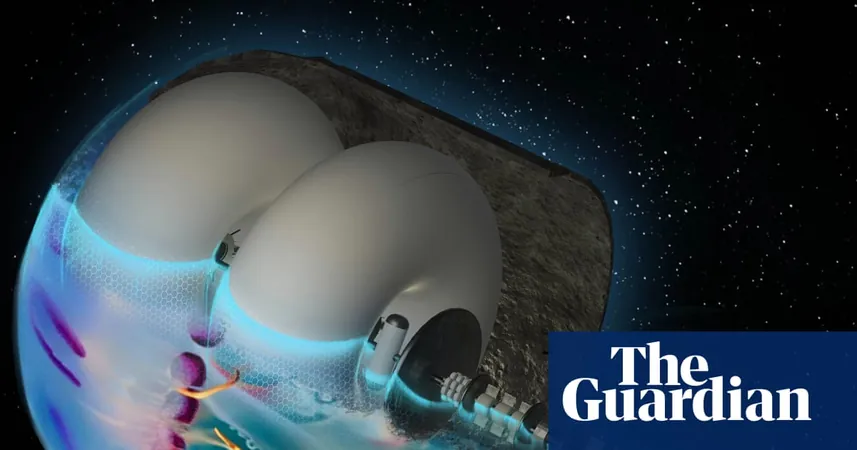
Jellyfish-Inspired Spaceships: The Future of Interstellar Travel is Here!
2025-08-06
Author: Siti
Revolutionizing Space Travel with Unique Designs
Imagine a world where spaceships are inspired by jellyfish and communities thrive in 3D-printed habitats. Experts across various fields—including scientists, engineers, and social theorists—have come together to envision a future where interstellar travel is not just a dream but a feasible reality.
This innovative thinking emerged from a global design competition known as Project Hyperion, aimed at conceptualizing self-sustaining "generation ships." These ships would carry up to 1,500 people on a staggering 250-year journey to potentially habitable planets.
The Challenge: Innovate with Existing Technologies
Participants were tasked with utilizing only current technologies or those expected to develop in the near future, such as nuclear fusion, to create their designs. An expert panel—including NASA scientists—evaluated nearly 100 submissions, focusing on how these proposals allowed for not just survival but flourishing human societies over generations in the void of space.
Chrysalis: The Winning Design
The standout winner was Chrysalis, a stunning 58km-long cigar-shaped craft. This design features concentric cylinders dedicated to various essential functions, such as 3D-printed living quarters, communal parks, libraries, and even biomes mimicking Earth’s diverse environments. With sustainability in mind, inhabitants would adhere to a vegetarian diet, preserving biodiversity onboard.
The proposal also addressed psychological resilience, emphasizing community living akin to isolated Antarctic bases and redefining family structures based on a broader sense of belonging.
Runners-Up: Bold Concepts for the Future
The second-place entry, Hyperion, took cues from sci-fi, resembling the iconic space station from "2001: A Space Odyssey." Its twin rings would create an Earth-like magnetic field vital for successful pregnancies, ensuring the mission's survival. Features include functional clothing designed for low gravity and the addition of three pairs of turtles for sustainable companionship.
Following closely in third place was Systema Stellare Proximum, which takes its design from jellyfish and uses a hollow asteroid for impact protection. This futuristic society would be guided by a unique blend of human council and non-human intelligence, envisioning emergent philosophies, including new religions honoring nature.
Beyond Expectations: A Vision for Humanity's Future
Other notable entries included fascinating ideas such as Endless Beyond the Stars, which envisioned biogas lighting sourced from deceased crew members. Dr. Andreas Hein, the executive director of the Initiative for Interstellar Studies, highlighted that this competition ventured into uncharted territories, exploring how civilization could thrive in resource-scarce environments.
His concluding thought? "We urged participants to intertwine architecture, technology, and social systems, and the results were truly astonishing. The future of humanity could very well depend on these imaginative designs!"


 Brasil (PT)
Brasil (PT)
 Canada (EN)
Canada (EN)
 Chile (ES)
Chile (ES)
 Česko (CS)
Česko (CS)
 대한민국 (KO)
대한민국 (KO)
 España (ES)
España (ES)
 France (FR)
France (FR)
 Hong Kong (EN)
Hong Kong (EN)
 Italia (IT)
Italia (IT)
 日本 (JA)
日本 (JA)
 Magyarország (HU)
Magyarország (HU)
 Norge (NO)
Norge (NO)
 Polska (PL)
Polska (PL)
 Schweiz (DE)
Schweiz (DE)
 Singapore (EN)
Singapore (EN)
 Sverige (SV)
Sverige (SV)
 Suomi (FI)
Suomi (FI)
 Türkiye (TR)
Türkiye (TR)
 الإمارات العربية المتحدة (AR)
الإمارات العربية المتحدة (AR)